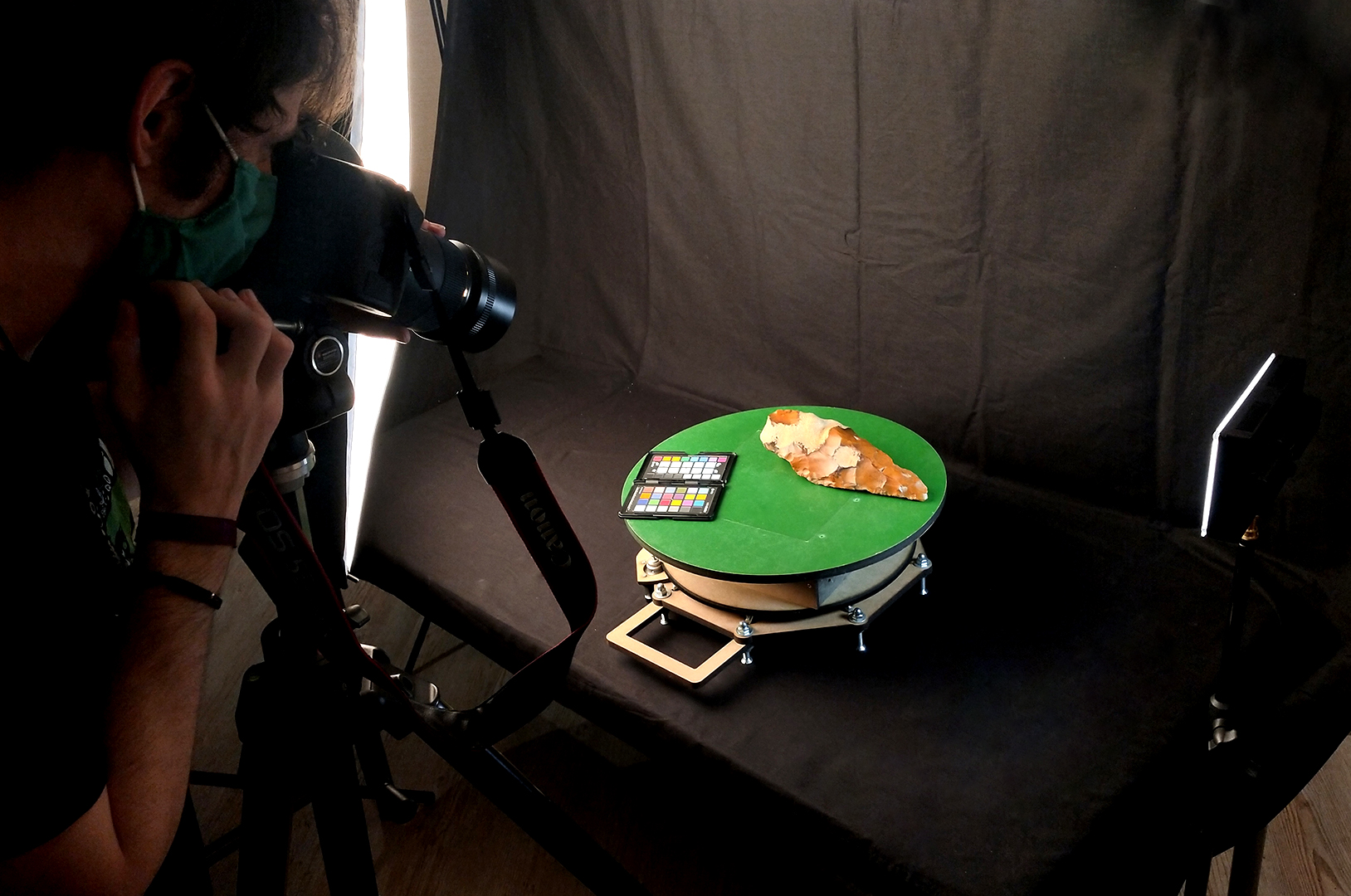eCorpus
eCorpus: An Open-Source Software Solution for 3D Heritage Enhancement.
eCorpus enables you to store, annotate, and share a collection of 3D models. It uses DPO-Voyager as its 3D viewer and metadata editor, and is equipped with a user rights management system and modification history, among other features.
The open architecture of this project guarantees data longevity, customization, and complete control over the infrastructure.
eCorpus can be used via self-hosting or a turnkey hosting service.
Content Preservation, Mediation, and Dissemination
A Software Born from Research, for Research
The development of eCorpus was initiated as part of the eThesaurus consortium.
Development is jointly managed by the University of Lille, the University of Liège, and the company Holusion.
- Challenge: To make the museum's lapidary collection accessible to the public and researchers by creating an interactive and durable digital mediation experience.
- Solution: The museum used the eCorpus software as a technical foundation to create its own online enhancement platform. The 3D models of the capitals and other fragments were imported and documented, allowing them to be viewed, annotated, and compared.
- Result: Researchers now have a unique study database, while the public can explore the collections with enriched visitor tours directly on the museum's website.
Projects Realized with eCorpus: The Cloister of Notre-Dame-en-Vaux, Châlons-en-Champagne

Features
DPO-Voyager
The 3D editor from the Smithsonian
-
3D Viewer
- 3D Rendering Engine
- Annotations
- Enriched Articles
- Guided Tours
eCorpus
Open-Source Service for Enhancing Your Digitizations
-
3D Viewer
- 3D Rendering Engine
- Annotations
- Enriched Articles
- Guided Tours
-
User Management
- Authentication
- Access Rights
- Copyrights
-
Data Management
- History
- Import/Export
- Metadata
Hosting and Maintenance
Complete Turnkey eCorpus Service
-
3D Viewer
- 3D Rendering Engine
- Annotations
- Enriched Articles
- Guided Tours
-
User Management
- Authentication
- Access Rights
- Copyrights
-
Data Management
- History
- Import/Export
- Metadata
-
Hosting Services
- Email Sending
- Backups
- System Monitoring
- Updates
-
Technical Support
- User Training
- Administrator Training
- Website Integration
- Advanced Interactive Tours
eCorpus Features
Digitization and mediation work by Art History students from the University of Lille
Comprehensive
eCorpus allows you to directly link data to each 3D object through enriched annotations: title, abstract, and articles that can include multimedia content (videos, images, links, etc.).
You can then orchestrate this data, attached to your 3D objects, to create animated scenes (called "Tours"), ideal for enhancing your 3D objects within a museum or educational mediation context. It also facilitates collaborative research through analysis and export tools.
Browser-Accessible
The eCorpus software is fully accessible from a simple web browser. You can therefore easily log in on any machine and show or even share your catalog of 3D objects by creating a new account for a third party.
Open but Secure
The application's architecture works through the deployment of independent instances, with databases that are compatible with each other but entirely separate. Most use cases involve entities that already have a content management solution; eCorpus data can be integrated within and searchable from it.
Open Source
The development results are released in an Open Source format, ensuring the user is fully in control of their data and environment. Furthermore, the dynamism of an Open Source project is crucial for its success and dissemination. This includes the presence of its documentation on a platform like GitHub and regular development activity by a clearly identified team.
Structure
Each entry in the database has a data structure organized in a reference JSON file, with linked files (3D object, textures, articles, images, videos, etc.).
This organization allows for great flexibility: exported data can be used as is, regardless of the server where they are stored.
The scene description file allows for the management of models with multiple levels of detail (LOD) as well as the translation of different metadata.
Each entry in the database can therefore be composed of an assembly of sub-elements, and each of these can contain multi-resolution models, offering optimized geometry loading by the client by limiting the loading of complex data based on its needs.
Object Digitization

Digital models from photogrammetry include information related to the object's geometry in the form of a mesh, as well as information related to its visual appearance as described in a PBR (Physical Based Rendering) model, which describes each point's optical properties: color, reflection, specularity, roughness, etc.
eCorpus is developed within a public-private ecosystem of heritage digitization specialists, forming a competence center for these activities. You can contact us to access resources or services from the University of Lille, Liège, private companies, or other partners depending on your needs.
eCorpus and digitization techniques are also taught in Digital and Heritage modules at several universities.
Alternative Models
They can be derived from captures other than photographic, for example: in non-visible light or by X-ray, and thus offer different visualizations of the model.
These 3D models can also store data related to their animation. This step of storing motion information is important for simulating mechanisms like clocks, or for complex assembly/disassembly demonstrations.
Digital Mediation
Among the different export formats for mediation, eCorpus supports visualization on touch tables, mobile tablets, holograms, and virtual and augmented reality devices. The eThesaurus demonstrator, manufactured by Holusion, allows for the visualization of an exported eCorpus database. The display is separated into two screens:
- The transparent screen is dedicated to the visualization of 3D objects, animations, and concise annotations.
- Navigation is provided by a secondary screen, placed in front of the device. Touch control was chosen for its prevalence among the public, who are accustomed to daily use of smartphones and tablets. On this screen, the user can also consult textual information and complementary photos and videos included in the articles.